Hawaii Joins Virginia, Texas, Florida, Maryland, Minnesota in Supercharging US Tourism, Boosting American Sports and Cultural Events, Here is a New Report
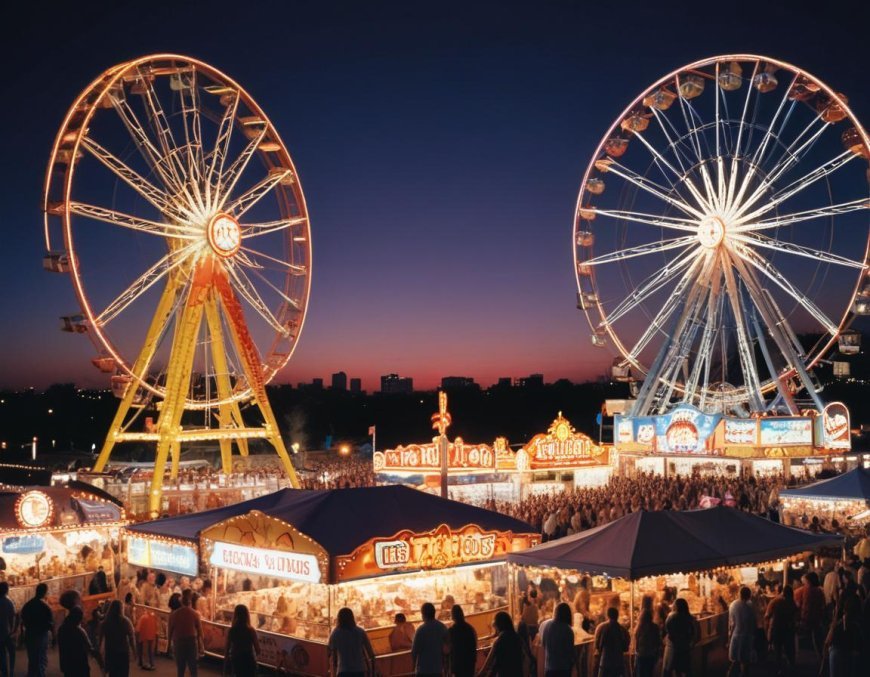
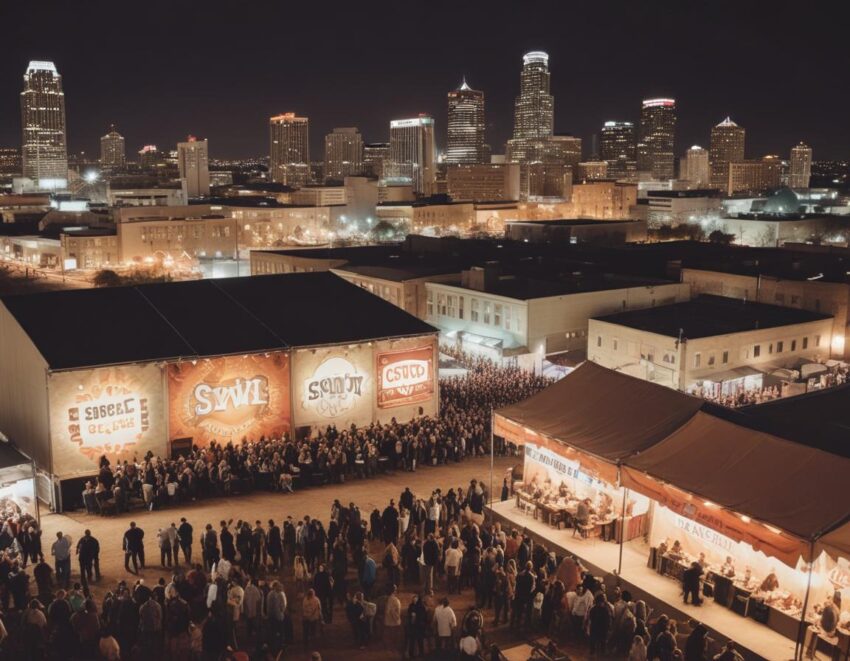
Hawai‘i joins Virginia, Texas, Florida, Maryland, and Minnesota in supercharging US tourism, boosting sports and cultural events. This new report highlights how these states are taking bold steps to attract more visitors from America itself, Canada, Mexico, Brazil, strengthen local economies, and showcase their unique identities. From world-class festivals in Hawai‘i to major sports tournaments in Texas and Florida, the momentum is clear.
Virginia is using a new sports tourism grant programme to host national tournaments. Texas is leveraging event trust funds for marquee competitions. Florida is enhancing its sports foundation and event bidding power. Maryland is backing both youth sports and major championships. Minnesota is empowering Tribal Nations to develop cultural tourism that reflects their heritage.
By combining local authenticity with global appeal, they are positioning themselves as leaders in the next wave of US tourism strategy. This new report reveals the depth of these investments, the variety of events planned, and the shared vision that unites these diverse destinations in a common goal—to supercharge tourism and boost sports and cultural events for years to come.
Hawai‘i Tourism Authority is investing $1.9 million to support 21 major festivals and sports events across the islands. The goal is to celebrate culture, engage communities, and attract visitors from around the world. This funding will power events that showcase Hawai‘i’s heritage, arts, and sporting excellence while boosting the state’s economy.
Major Funding to Elevate Hawai‘i’s Cultural and Sports Calendar
The Hawai‘i Tourism Authority (HTA) has committed $1.9 million through its Signature Events programme. This funding will run from July 2025 to June 2026. It will cover events that highlight Hawai‘i’s culture, history, food, agriculture, sports, and volunteer tourism. HTA Interim President and CEO Caroline Anderson says these events put Hawai‘i in the global spotlight. They draw visitors while creating shared experiences for residents and tourists. The programme is managed in partnership with Kilohana, a division of the Council for Native Hawaiian Advancement, ensuring projects support community values and brand integrity.
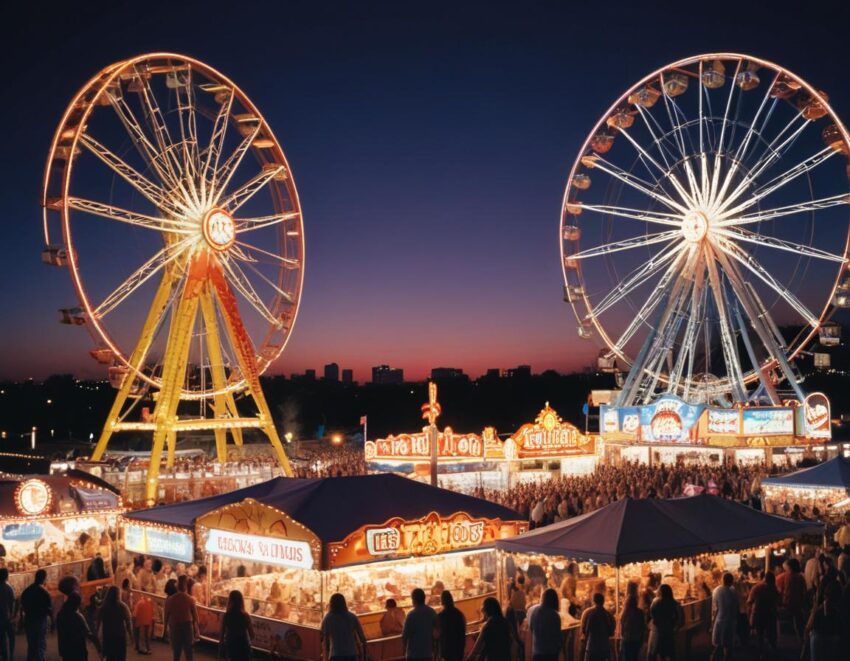
Cultural Festivals That Celebrate Hawai‘i’s Identity
The Aloha Festivals, now in their 79th year, are a highlight. They feature the Royal Court Investiture, the Waikīkī Ho‘olaule‘a, and a Floral Parade. Over 100,000 people attend annually. Another major event is the 80th Anniversary of the End of WWII, which honours seven surviving veterans who witnessed the surrender aboard the USS Missouri. The Merrie Monarch Festival, the world’s premier hula celebration, will be broadcast globally from Hilo in April 2026. Other cultural events include the Pan-Pacific Festival, the Duke Kahanamoku OceanFest, the Hawai‘i Food and Wine Festival, and the Hawai‘i International Film Festival, each drawing large local and international audiences.
Honouring Heritage Through Annual Celebrations
The 30th Honolulu Festival celebrates Pacific Rim diversity through art, music, and dance. The 2026 King Kamehameha Celebrations honour Hawai‘i’s first monarch with lei draping ceremonies and parades. The Mele Hula Festival uniquely blends song and dance traditions, with free performances and educational workshops. The Prince Lot Hula Festival, Hawai‘i’s largest noncompetitive hula showcase, continues its mission of cultural preservation with performances, chants, and a local vendor market. These events invite visitors to experience authentic Hawaiian traditions while connecting with the community.
Showcasing Hawai‘i on the Global Sports Stage
HTA’s investment also strengthens sports tourism. The Hawai‘i Bowl guarantees the University of Hawai‘i a home berth when eligible, reaching millions via ESPN. The Honolulu Marathon attracts runners from around the globe to a scenic 26.2-mile course ending at Kapi‘olani Park. The Hoops in Hawai‘i Classic blends collegiate basketball with cultural exchange, while the IRONMAN World Championship in Kailua-Kona draws elite athletes and thousands of volunteers. Each of these events promotes responsible tourism and inspires participants to engage with local culture.
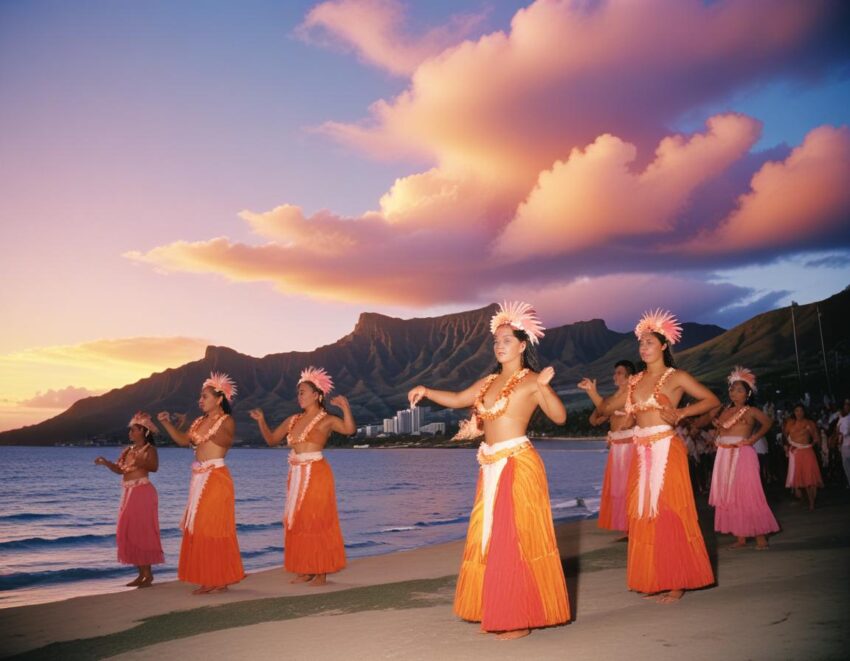
Sports Events That Drive Economic Recovery
The Maui Marathon, the state’s longest-running, returns to West Maui in April 2025. It supports wildfire recovery and is expected to generate over $10 million. The Moloka‘i 2 O‘ahu Paddleboard World Championships and the Moloka‘i Hoe canoe race showcase endurance and Hawaiian seafaring traditions. The Na Wahine O Ke Kai celebrates women in canoe racing. The Southwest Maui Invitational brings top U.S. college basketball teams to Lahaina, while the TransPacific Volleyball Championships unite over 360 teams and 25,000 attendees, combining elite competition with Hawaiian culture.
Balancing Tourism Growth with Cultural Integrity
HTA’s Signature Events programme focuses on stewardship as much as growth. The selection process favours events that protect Hawai‘i’s competitive global brand while ensuring local communities benefit. This means funding is tied not only to visitor numbers but also to cultural authenticity, environmental responsibility, and community engagement. The approach reflects Hawai‘i’s broader tourism strategy—prioritising quality over quantity and long-term sustainability over short-term gains.
How US States Are Using Tourism to Drive Growth
In 2025, many US states are increasing their investments in sports tourism and cultural tourism. These sectors bring visitors from other states and countries. They create jobs, support local businesses, and keep heritage alive. Sports events fill stadiums and hotels. Cultural festivals bring music, art, and traditions to life. Together, they make tourism richer and more diverse.
This year, states are offering new grants, event funds, and marketing support. They are backing both big competitions and local festivals. The aim is to grow visitor numbers while protecting community identity and values. Below is a state-by-state look at these investments and how they are shaping tourism in 2025.
Hawaii – Signature Events and Cultural Leadership
Hawai‘i is investing $1.9 million in its Signature Events programme for 2025–2026. The funding supports 21 major festivals and sports events. These range from the Merrie Monarch hula festival to the Honolulu Marathon. The programme is run by the Hawai‘i Tourism Authority in partnership with Kilohana, a division of the Council for Native Hawaiian Advancement.
Hawai‘i is also funding cultural programmes under its Ho‘okipa Malihini initiative. These focus on protecting Hawaiian traditions and making them part of the visitor experience. The strategy links cultural pride with global appeal. It also gives communities a direct role in tourism planning and benefits.
Virginia – New Sports Tourism Grant Programme
Virginia has launched a statewide Sports Tourism Grant Programme in 2025. It is run by the Virginia Tourism Authority. The grants help localities and event organisers attract sports competitions and tournaments. The focus is on events that bring visitors from outside Virginia.
This programme gives small and mid-sized cities a better chance to host regional and national championships. It also supports the state’s goal to grow its sports economy while spreading tourism benefits beyond its largest urban areas.
Texas – Event Trust Funds and Venue Investments
Texas continues to use its Event Trust Funds to bring in major sporting and cultural events. These include the Major Events Reimbursement Programme and the Motor Sports Racing Trust Fund. They help cover public costs linked to hosting high-profile competitions, from security to transport.
Local governments are also exploring hotel occupancy tax funding for venue projects. This visitor-paid tax is used to upgrade or build facilities. Cities like Beaumont are considering new convention centres. Bexar County is discussing a potential new arena for the San Antonio Spurs. These moves show Texas’ commitment to combining event attraction with infrastructure growth.
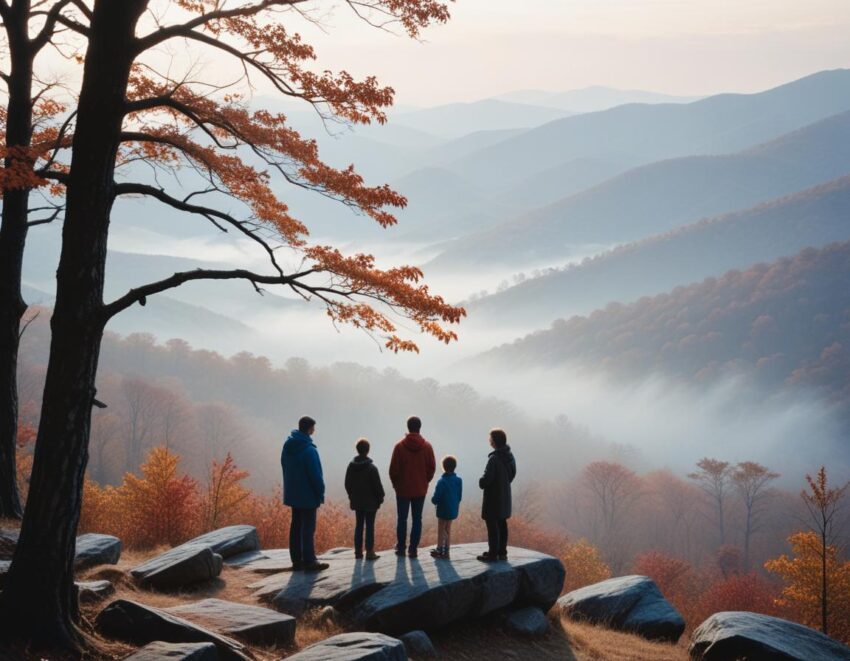
Florida – Sports Foundation Grants and Event Bidding
Florida is using the Florida Sports Foundation to attract more sports tourism. The Foundation offers grants to help cities bid for and host events. It also runs the annual Sports Summit, where rights holders meet destinations.
This approach supports year-round sports tourism. Events range from youth tournaments to professional competitions. Each one brings visitors who spend on hotels, food, and entertainment.
Maryland – Major Events Fund and Youth Sports Support
Maryland’s Major Events Fund and Youth & Amateur Sports Grant Programme are both active in 2025. They provide financial help to land and grow events that draw visitors to the state. The Youth & Amateur Sports grants focus on building participation and supporting community sports culture.
By funding both large-scale and grassroots events, Maryland is making sure sports tourism benefits are widely shared. It also helps create a talent pipeline by linking young athletes to bigger competitions in their home state.
Minnesota – Tribal Nations Tourism Grant Programme
Minnesota is investing in cultural tourism through its Tribal Nations Tourism Grant Programme. This supports projects by the state’s 11 federally recognised Tribal Nations. Grants can fund heritage sites, cultural centres, arts events, agritourism, and outdoor recreation.
The programme is built on sustainability and self-representation. It gives Tribal Nations the resources to tell their own stories and create tourism experiences that reflect their values. Visitors benefit from authentic cultural encounters, and communities keep control over how their culture is shared.
Washington State – Arts and Culture Tourism Grants
Washington State Tourism is offering Arts & Culture Grants in 2025. These support museums, historic sites, cultural districts, and creative industries. Projects funded must connect culture with tourism and show a clear visitor impact.
This grant scheme helps ensure that cultural attractions stay vibrant and competitive. It also encourages partnerships between arts organisations and tourism operators. The goal is to integrate arts into the broader visitor economy.
New York – Major Cultural Funding for Tourism
The New York State Council on the Arts (NYSCA) is investing heavily in culture in 2025. It is distributing $162 million this year, with $82 million for programmes and $80 million for capital projects. In 2026, it will make $81.5 million available.
Much of this funding will strengthen cultural venues, festivals, and creative districts that are also key tourism assets. New York is also preparing for America’s 250th anniversary in 2026. This heritage milestone is expected to draw heritage travellers from across the world.
Pennsylvania – Marketing Grants and America250 Focus
Pennsylvania has launched the Marketing to Attract Tourists programme and the Great American Getaway grants. These support cultural, culinary, outdoor, and urban tourism products. The Governor’s 2025–26 budget also proposes $65 million for America250 events.
Counties are running their own grant rounds using hotel occupancy taxes. This ensures that even local events and attractions get funding to improve facilities and marketing. Pennsylvania’s approach combines state-level promotion with local-level investment.
Massachusetts – Cultural Facilities and Heritage Grants
Massachusetts is using the Mass Cultural Council to fund cultural facilities and districts. It is also preparing special grants for America250 events. These will support museums, performance spaces, and heritage sites across the state.
By upgrading cultural infrastructure and promoting historic anniversaries, Massachusetts aims to strengthen its position as a cultural tourism leader. Visitors can expect enhanced experiences and improved access to historic and artistic treasures.
Ohio – Sports Events Grants and a New Sports Commission
Ohio continues to run its Sports Events Grant Programme in 2025. Lawmakers are also working to establish an Ohio Sports Commission. The aim is to coordinate sports tourism development and expand funding opportunities.
Ohio’s grants can be used to attract everything from youth championships to major league competitions. This flexibility helps the state compete for events that fill hotels and restaurants year-round.
South Carolina – Heritage Tourism and “Undiscovered SC”
South Carolina is using its “Undiscovered SC” grants to improve publicly owned attractions. It also funds heritage tourism, with a focus on sites linked to the American Revolution. Gullah Geechee heritage and African American history are being promoted as part of the state’s cultural identity.
These investments are designed to draw visitors seeking meaningful historical and cultural experiences. They also strengthen the storytelling power of local communities.
Colorado – Marketing and Cultural Content
Colorado is investing in tourism marketing with a focus on international markets. While not offering a new grant round in 2025, the state continues to develop cultural and heritage tourism content. This keeps Colorado’s cultural attractions visible alongside its well-known outdoor adventure offerings.
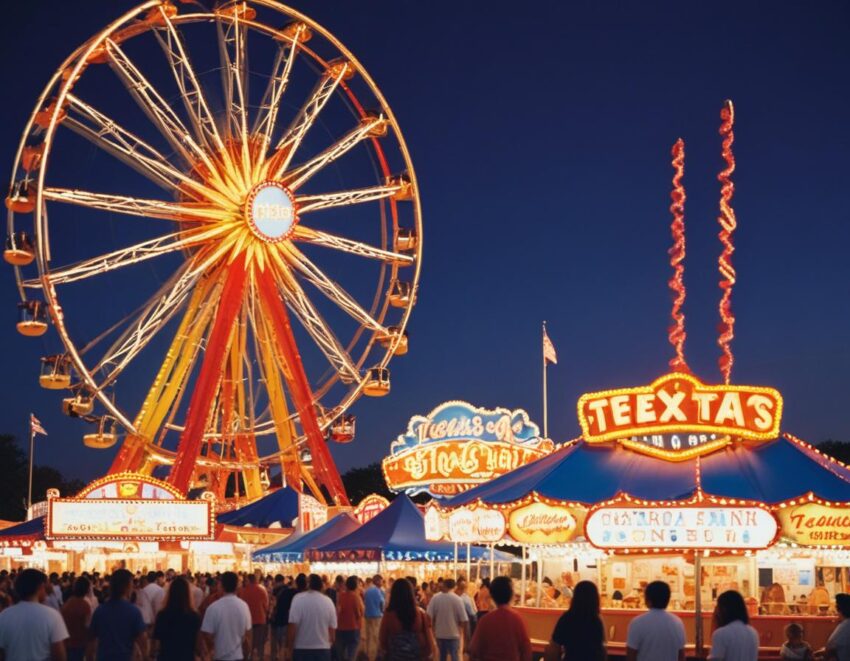
Regional Programmes – The Appalachian Regional Commission
The Appalachian Regional Commission (ARC) funds multi-state arts, culture, and heritage projects in the Appalachian region. In 2025, its guidance continues to prioritise tourism as an economic driver. This supports small towns and rural areas that may not have state-level resources but can partner on regional initiatives.
Event Name Type Location Timing Key Features Aloha Festivals Cultural Various Islands Ongoing Aug–Sep? Longest-running cultural festival with Royal Court, Ho‘olaule‘a, Floral Parade; ~100,000 attendees annually 80th Anniversary of the End of WWII Cultural Pearl Harbor / USS Missouri Likely December 2025? Honours surviving 1945 veterans; ceremonies, concerts, air shows, education Merrie Monarch Festival Broadcast Cultural Hilo April 2026 Premier hula competition; globally streamed from Edith Kanaka‘ole Stadium Pan-Pacific Festival Cultural Honolulu (likely) Likely early-mid 2026? Multicultural performances, food, international exchange Duke Kahanamoku OceanFest Cultural / Sports Waikīkī Likely summer 2026? Celebrates surf and cultural legacy via ceremonies & traditional craft Hawai‘i Food and Wine Festival Cultural Honolulu Likely late 2025? Premier culinary event showcasing chefs, farmers, food culture Hawai‘i International Film Festival Cultural Various Likely late 2025? Pacific’s premier cinema event; global and local films, ~30,000 attendees Honolulu Festival Cultural Honolulu Likely spring 2026? Celebrates Pacific Rim culture through music, dance, and art King Kamehameha Celebrations (154th) Cultural Statewide June 2026 Lei draping, Floral Parade, ho‘olaule‘a honoring Hawai‘i’s first monarch Mele Hula Festival Cultural Various Date TBD (2026?) Multiday festival with mele & hula, workshops, competition, free shows Prince Lot Hula Festival Cultural Moanalua Gardens, O‘ahu Date TBD (2026?) Largest non-competitive hula showcase with performances & local vendors Hawai‘i Bowl Sports Honolulu Likely Dec 2025 or Jan 2026 College football bowl, televised on ESPN Honolulu Marathon Sports O‘ahu Dec 2025 26.2-mile run across landmarks ending at Kapi‘olani Park Hoops in Hawai‘i Classic Sports Hawai‘i Island? Likely early 2026? Collegiate basketball with cultural programming IRONMAN World Championship Sports Kailua-Kona Late 2025? (usual Fall) Global endurance race with elite athletes and volunteers Maui Marathon Sports West Maui April 27, 2026 Long-running marathon supporting wildfire recovery; $10M+ economic impact Moloka‘i 2 O‘ahu Paddleboard World Championships Sports Moloka‘i–O‘ahu Channel Mid-2026? 32-mile race celebrating paddling heritage Moloka‘i Hoe Canoe Race Sports Moloka‘i–O‘ahu Channel Mid-2026? 41-mile heritage canoe race, over 70-year history Na Wahine O Ke Kai Canoe Race Sports Moloka‘i–O‘ahu Channel Mid-2026? Women’s 41-mile cultural canoe race Southwest Maui Invitational (Maui Invitational) Sports Lahaina Early season 2026 (Feast Week) Collegiate basketball tournament of eight teams, ESPN coverage TransPacific Volleyball Championships Sports Hawai‘i (Venue TBD) Mid-2026? Indoor volleyball event with 360+ teams and 25,000 attendees
Why This Matters for Tourism and Communities
State investment in sports and cultural tourism has a direct impact on local economies. Events bring visitors who spend money on hotels, dining, shopping, and transport. Cultural attractions offer year-round visitor experiences, keeping tourism steady beyond peak seasons.
These investments also build community pride and preserve heritage. They encourage collaboration between governments, businesses, and cultural groups. By combining sports and culture, states appeal to a wider audience and create reasons for visitors to return.
In 2025, US states are not just promoting their attractions—they are shaping tourism for the future. They are funding events, upgrading venues, and protecting cultural heritage. They are also using tourism as a tool for economic resilience and community development.
The result is a tourism landscape where visitors can enjoy both the excitement of major sports competitions and the depth of cultural experiences. It is a model that can help the US compete globally while keeping its local character strong.
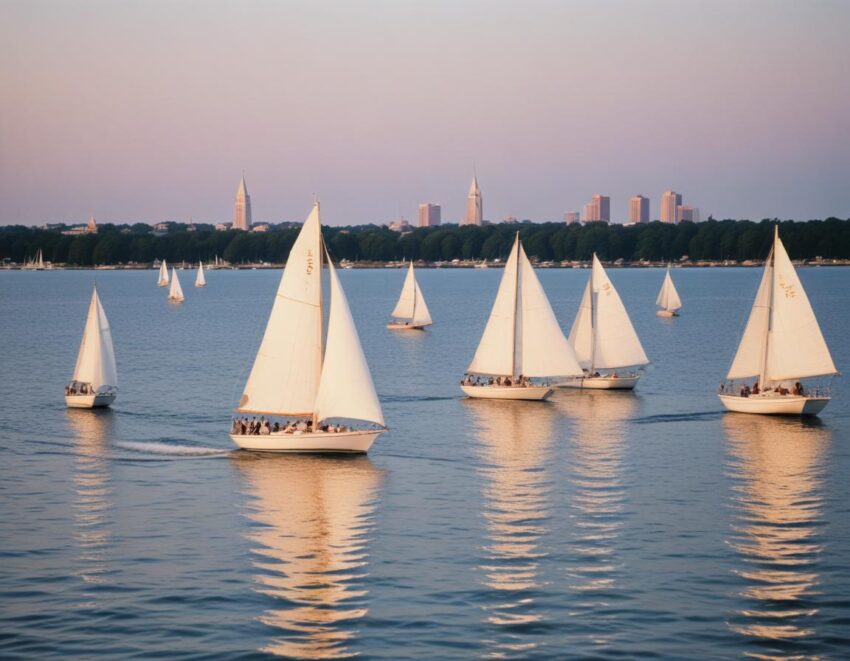
Hawai‘i: A Timeless Pacific Escape of Culture, Nature, and Luxury
By July 2025, Hawai‘i’s tourism sector continues to stand as a cornerstone of the state’s economy, blending its unique cultural identity with a global visitor base. Visitor arrivals remain steady at around 9.6 million annually, according to state tourism figures, with 4.7 million arrivals recorded in the first seven months of 2025. The United States mainland remains the largest market, followed by Japan, Canada, Australia, and Korea.
Visitors spent approximately $14.8 billion from January to July 2025, with per-person daily spending averaging $230. The hotel industry has maintained one of the highest occupancy rates in the United States, hovering near 82%, driven by a balanced mix of leisure travellers, luxury-seeking couples, and business convention delegates. Flagship properties such as the Halekulani, Four Seasons Hualālai, and The Royal Hawaiian continue to command premium rates, while mid-tier hotels and boutique resorts cater to value-conscious visitors.
Cruise tourism, rebounding from earlier declines, has recorded over 300,000 passenger arrivals so far in 2025. Honolulu, Lahaina (Maui), Nāwiliwili (Kaua‘i), and Hilo (Hawai‘i Island) remain major ports of call. Cruises are increasingly marketed as a gateway to inter-island exploration, often paired with pre- or post-cruise hotel stays.
Government-backed programmes, including the Hawai‘i Tourism Authority’s Signature Events funding, are driving cultural and sports tourism growth, ensuring the industry remains competitive while promoting heritage preservation. These strategies position Hawai‘i as both a global luxury destination and a cultural hub with deep community engagement.
Destination Overview
Hawai‘i, an archipelago of eight main islands, lies in the central Pacific Ocean, about 2,400 miles from California. Each island has its own identity—O‘ahu blends urban energy with legendary beaches, Maui offers a mix of luxury resorts and natural beauty, Hawai‘i Island showcases volcanic landscapes, and Kaua‘i is known for its dramatic cliffs and lush valleys.
Beyond the postcard-perfect scenery, Hawai‘i is a living cultural landscape, shaped by Native Hawaiian traditions, plantation-era migrations, and global influences. Tourism is its largest industry, but it is balanced by efforts to protect natural resources and support local communities.
With year-round warm weather, Hawai‘i is a true all-season destination. English and Hawaiian are the official languages, though Hawaiian phrases and place names are widely used. The Aloha Spirit is not just a greeting—it’s a cultural value reflecting warmth, respect, and harmony.
Top Attractions and Hidden Gems
Pearl Harbor National Memorial on O‘ahu remains one of the most visited sites, offering poignant insight into World War II history. Nearby, the Battleship Missouri Memorial and the Pacific Aviation Museum expand the story.
Natural wonders include Hawai‘i Volcanoes National Park on Hawai‘i Island, home to active Kīlauea and Mauna Loa. On Maui, sunrise atop Haleakalā is a bucket-list experience—reservations are essential. Kaua‘i’s Nāpali Coast offers hiking, kayaking, or scenic flights, while Waimea Canyon is known as the “Grand Canyon of the Pacific.”
For hidden gems, explore the lesser-known beaches of Moloka‘i, the heritage town of Lāhainā (now in recovery and renewal), and the cultural richness of Lāna‘i, from its secluded beaches to the Keahiakawelo “Garden of the Gods.”
Activities and Experiences
Adventure seekers can hike the Kalalau Trail on Kaua‘i, snorkel in Molokini Crater off Maui, or take a manta ray night dive in Kona. Surf lessons in Waikīkī provide a beginner-friendly taste of Hawai‘i’s most famous sport.
Culture lovers should visit the Bishop Museum, ʻIolani Palace, and the Polynesian Cultural Center for immersive learning. Festivals like the Merrie Monarch (hula) and Aloha Festivals bring traditions to life.
Foodies will enjoy farm tours on the Big Island, coffee tastings in Kona, and seafood markets on O‘ahu. Shopping ranges from luxury brands in Honolulu’s Ala Moana Center to artisan markets in Hilo. Nightlife spans Waikīkī’s rooftop bars, Maui’s live music lounges, and O‘ahu’s Chinatown arts scene.
Accommodation Types and Tips
Hawai‘i’s accommodation landscape covers ultra-luxury resorts, mid-range hotels, boutique stays, and vacation rentals. Waikīkī hosts a concentration of large hotels like the Halekulani and Moana Surfrider. Maui’s Wailea area is home to high-end properties such as Four Seasons Maui and Grand Wailea.
For a quieter stay, Kaua‘i offers boutique resorts along the North Shore, while Hawai‘i Island’s Kohala Coast has sprawling resorts with golf courses and beach access. Vacation rentals are common, but travellers should check for legal, licensed properties to avoid last-minute cancellations. Booking early for peak seasons (December–March, June–August) is essential, especially for oceanfront rooms.
Local Food and Must-Try Dishes
Hawai‘i’s cuisine reflects its multicultural heritage. Must-try dishes include poke (seasoned raw fish), loco moco (rice, burger patty, gravy, egg), and plate lunch (rice, macaroni salad, protein). Fresh seafood, from ahi tuna to opakapaka, is a highlight.
Local treats include malasadas (Portuguese doughnuts), shave ice, and haupia (coconut pudding). For a true Hawaiian feast, attend a lūʻau, where you can try kālua pig cooked in an imu (underground oven) and enjoy hula performances.
Farm-to-table dining thrives, with chefs showcasing local produce like sweet Maui onions, Kona coffee, and tropical fruits. Farmers’ markets, such as Hilo’s on the Big Island, are perfect for sampling regional flavours.
Transportation and How to Get Around
Most visitors arrive via Honolulu International Airport (HNL) on O‘ahu, with inter-island flights connecting to Kahului (Maui), Kona and Hilo (Hawai‘i Island), and Līhu‘e (Kaua‘i). Inter-island travel is dominated by Hawaiian Airlines, Southwest Airlines, and Mokulele Airlines.
Car rentals are the most practical way to explore each island, especially for reaching beaches, hiking trails, and rural areas. On O‘ahu, TheBus offers extensive routes, while Waikīkī has trolley services for tourists. Ride-shares and taxis are available but costlier for long distances.
Cruise ships offer another way to experience multiple islands without multiple hotel stays, docking at major ports. Helicopter tours are popular for seeing otherwise inaccessible landscapes.
Costs, Budgeting, and Money Tips
Hawai‘i is known for high travel costs, driven by its remote location. Hotel rates in Waikīkī average $300–$400 per night for mid-range, and $800+ for luxury. Dining out can range from $15 for a casual plate lunch to $100+ per person at fine dining restaurants.
To save, consider travelling in shoulder seasons (April–May, September–October). Book flights and accommodations well in advance, and use supermarket delis or farmers’ markets for affordable meals. Public beaches are free, but some parks require entry fees or reservations.
Credit cards are widely accepted, and ATMs are common, though rural areas may have fewer banking services.
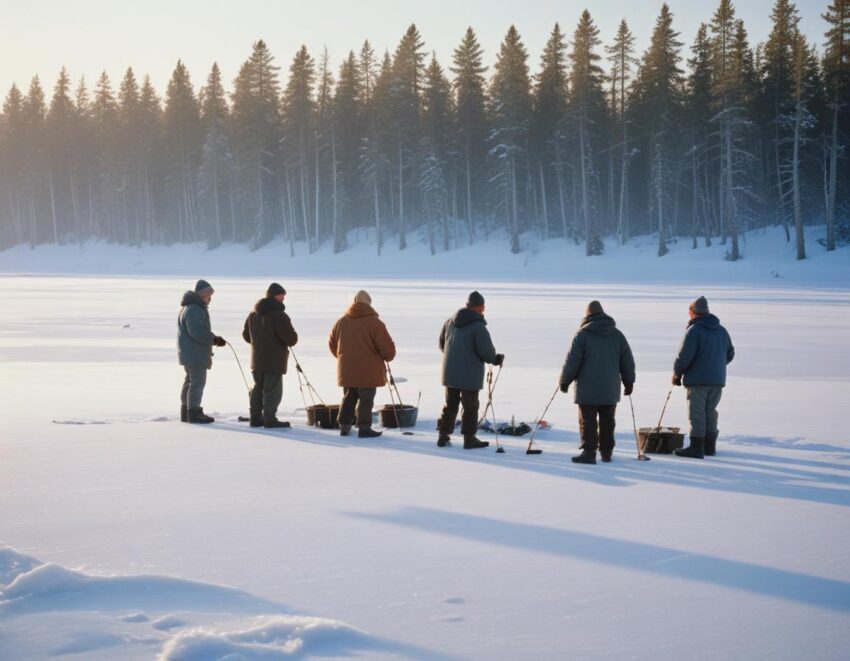
Visa Requirements and Travel Restrictions
US citizens do not need a passport to visit Hawai‘i. International visitors must meet US entry requirements, which typically involve a valid passport and, if applicable, a visa or ESTA for visa waiver programme countries.
As of mid-2025, there are no COVID-19 testing or quarantine requirements, but visitors should check official state and federal websites for updates before travelling. Some natural sites and cultural areas may have capacity limits or reservation systems to manage crowds.
Practical Travel Info
Hawai‘i is generally safe for travellers, but petty theft can occur—avoid leaving valuables in cars or unattended on beaches.
English is the primary language, with Hawaiian used in cultural contexts and place names. Internet connectivity is good in urban and resort areas, but rural zones may have slower speeds.
Local customs emphasise respect for nature and culture—observe kapu (prohibited) signs, avoid trespassing on private land, and learn basic Hawaiian words like “mahalo” (thank you) and “aloha” (hello/love). Tipping follows US norms: 15–20% in restaurants, $1–$2 per bag for porters, and per-day rates for housekeeping.
Itineraries and Travel Tips
For a one-week trip, start with three days in O‘ahu to explore Pearl Harbor, Waikīkī Beach, and the North Shore. Fly to Maui for two days to see Haleakalā and snorkel at Molokini. End with two days on Hawai‘i Island to visit Volcanoes National Park and enjoy Kona coffee country.
For a culture-focused itinerary, plan around major festivals such as the Merrie Monarch in April or the Aloha Festivals in September.
Travel tips: Reserve key experiences like sunrise at Haleakalā or Nā Pali Coast boat tours months ahead. Wear reef-safe sunscreen, stay hydrated, and respect ocean conditions—Hawai‘i’s waters can be unpredictable.
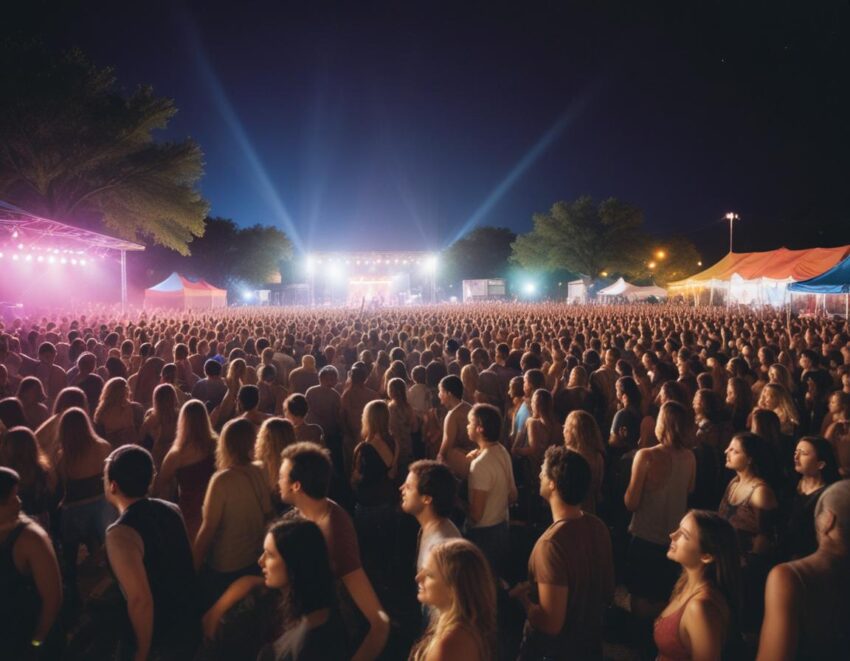
Impact on Hawai‘i’s Tourism and Economy
Cultural and sports events are major economic drivers for Hawai‘i. They attract visitors who stay longer, spend more, and often return. The combined draw of these 21 events will generate millions in revenue, support local businesses, and create seasonal jobs. Beyond the economic impact, these events strengthen Hawai‘i’s identity as a place where culture, sport, and natural beauty intersect. They give visitors meaningful experiences and leave lasting impressions that encourage repeat visits.
A Model for Other Destinations
Hawai‘i’s strategy offers lessons for other destinations seeking to balance tourism promotion with cultural respect. By investing in signature events, the state ensures its tourism brand is not just about beaches and resorts but about people, heritage, and authentic experiences. This integrated approach helps maintain Hawai‘i’s position as a world-class destination while protecting what makes it unique.
Looking Ahead to 2026
With funding secured, the 2025–2026 events calendar promises to be one of Hawai‘i’s most vibrant. From the high-energy Honolulu Marathon to the graceful hula at Merrie Monarch, visitors will have opportunities to engage with Hawai‘i’s spirit at every turn. The continued support from HTA signals a commitment to both cultural preservation and economic vitality, ensuring that Hawai‘i’s tourism future remains as strong and diverse as its heritage.
The post Hawaii Joins Virginia, Texas, Florida, Maryland, Minnesota in Supercharging US Tourism, Boosting American Sports and Cultural Events, Here is a New Report appeared first on Travel And Tour World.






